Green Cuticle Infection: Causes, Symptoms, and Treatment of Paronychia
What are the common causes of green cuticle infections. How can you recognize the symptoms of paronychia. What are the most effective treatment options for infected nails. How can you prevent recurrent paronychia infections.
Understanding Paronychia: A Common Nail Infection
Paronychia is a prevalent infection that affects the soft tissue surrounding fingernails or toenails. It occurs when bacteria or fungi enter the skin around the nail, typically through small cuts or injuries. This condition can cause significant discomfort and, if left untreated, may lead to more serious complications.
Staphylococcus aureus is the most common bacterial culprit behind paronychia, but other microorganisms can also be responsible. Understanding the causes, symptoms, and treatment options for paronychia is crucial for proper management and prevention of this bothersome condition.
Common Causes and Risk Factors for Paronychia
Several factors can increase the risk of developing paronychia:

- Frequent hand washing or prolonged exposure to water
- Nail biting or picking at hangnails
- Manicures or pedicures with unsterile tools
- Ingrown nails
- Certain medical conditions (e.g., diabetes, psoriasis)
- Occupations that involve constant hand-washing (e.g., healthcare workers, food handlers)
Do certain habits increase the likelihood of developing paronychia? Yes, activities that damage the cuticle or expose the nail area to moisture and bacteria can significantly raise the risk. Nail biting, in particular, is a common culprit as it can introduce oral bacteria to the nail area and create small injuries that allow pathogens to enter.
Recognizing the Symptoms of Paronychia
Identifying paronychia early is key to preventing its progression. Common symptoms include:
- Redness and swelling around the nail
- Tenderness and pain, especially when pressure is applied
- Warmth in the affected area
- Pus-filled blisters or abscesses
- Changes in nail appearance (e.g., discoloration, ridges)
In some cases, particularly with chronic paronychia, the nail may become thickened or develop a greenish discoloration. This green hue is often caused by Pseudomonas aeruginosa, a bacterium that produces a distinctive pigment.
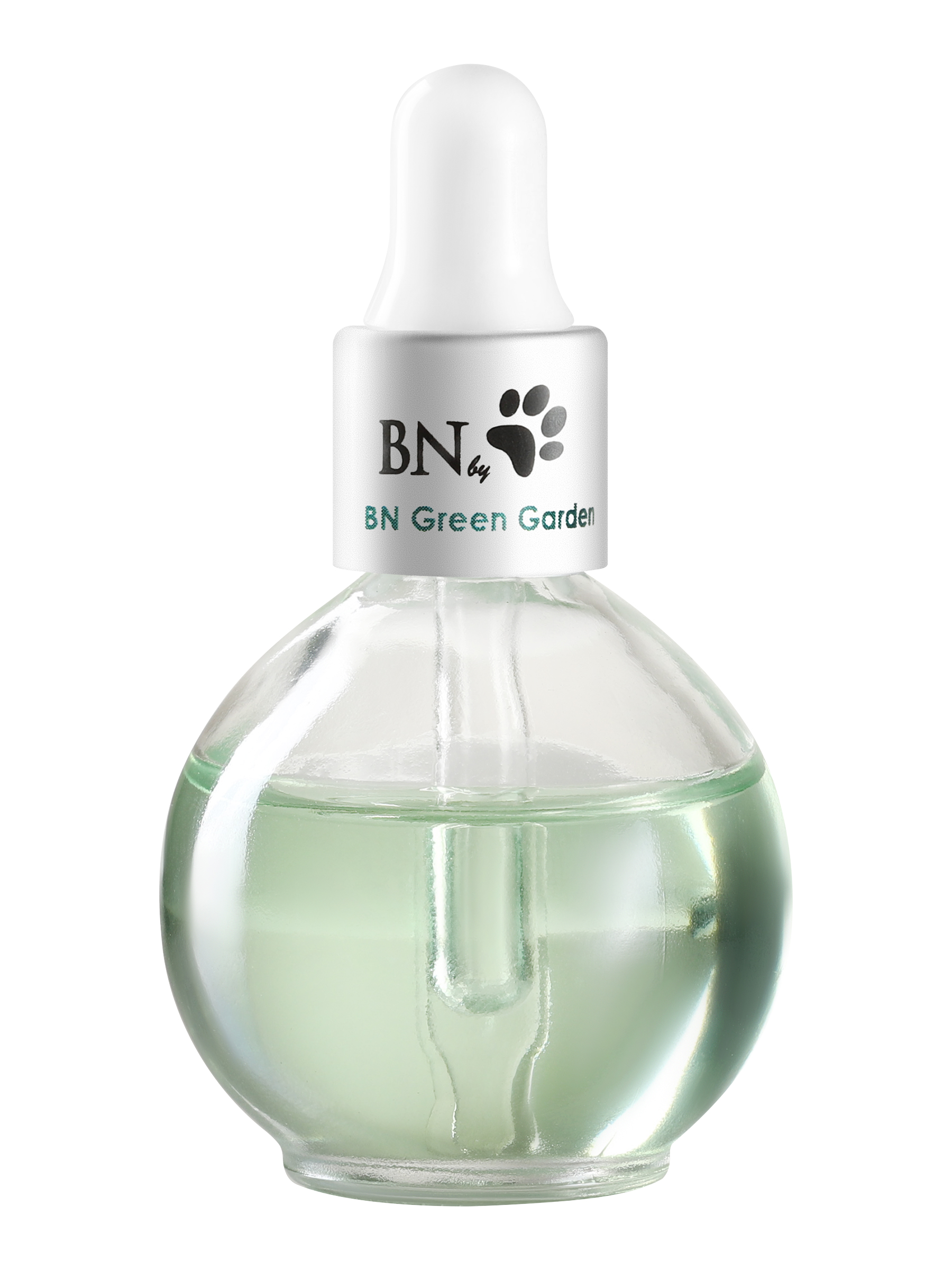
Acute vs. Chronic Paronychia
Paronychia can be classified as acute or chronic based on its duration and characteristics:
- Acute paronychia: Develops suddenly and typically lasts less than 6 weeks
- Chronic paronychia: Persists for more than 6 weeks and may involve multiple nails
How can you differentiate between acute and chronic paronychia? Acute cases often develop rapidly with more intense symptoms, while chronic paronychia tends to have a slower onset and may involve nail changes over time. Chronic cases are also more likely to be associated with occupational exposures or underlying health conditions.
Effective Treatment Options for Paronychia
The treatment approach for paronychia depends on its severity and whether it’s acute or chronic. Here are some common treatment options:
1. Home Remedies and Self-Care
For mild cases of acute paronychia, the following self-care measures may be effective:
- Warm water soaks (3-4 times daily for 15 minutes)
- Over-the-counter pain relievers
- Avoiding further trauma to the affected area
2. Topical and Oral Antibiotics
If bacterial infection is suspected, your healthcare provider may prescribe:

- Topical antibiotics (e.g., mupirocin, bacitracin)
- Oral antibiotics for more severe cases (e.g., cephalexin, dicloxacillin)
3. Antifungal Medications
For fungal infections, particularly in chronic paronychia, antifungal treatments may be necessary:
- Topical antifungals (e.g., ciclopirox, ketoconazole)
- Oral antifungals for persistent cases (e.g., fluconazole, itraconazole)
4. Drainage Procedures
In cases where an abscess has formed, drainage may be required:
- Incision and drainage by a healthcare professional
- Removal of part of the nail in severe cases
What factors determine the need for drainage in paronychia? The presence of a visible abscess, significant swelling, or severe pain that doesn’t respond to conservative treatments often indicates the need for drainage. This procedure can provide immediate relief and allow for proper healing.
Prevention Strategies for Recurrent Paronychia
Preventing paronychia involves adopting good nail care habits and avoiding practices that can damage the nail or surrounding skin. Here are some effective prevention strategies:

- Keep nails clean and dry
- Avoid biting nails or picking at hangnails
- Wear gloves when working with water or harsh chemicals
- Use moisturizer to prevent skin cracks around nails
- Trim nails straight across and file rough edges
- Choose reputable nail salons that sterilize their tools
Can dietary changes help prevent paronychia? While diet isn’t directly linked to paronychia, maintaining overall health through proper nutrition can support your immune system and promote healthy skin and nails. Ensuring adequate intake of vitamins and minerals, particularly biotin and zinc, may contribute to nail health.
Complications and When to Seek Medical Attention
While many cases of paronychia resolve with proper care, some situations warrant immediate medical attention:
- Severe pain or swelling
- Signs of spreading infection (e.g., red streaks on the skin)
- Fever or chills
- No improvement after several days of home treatment
- Recurring infections
Untreated or severe paronychia can lead to complications such as:
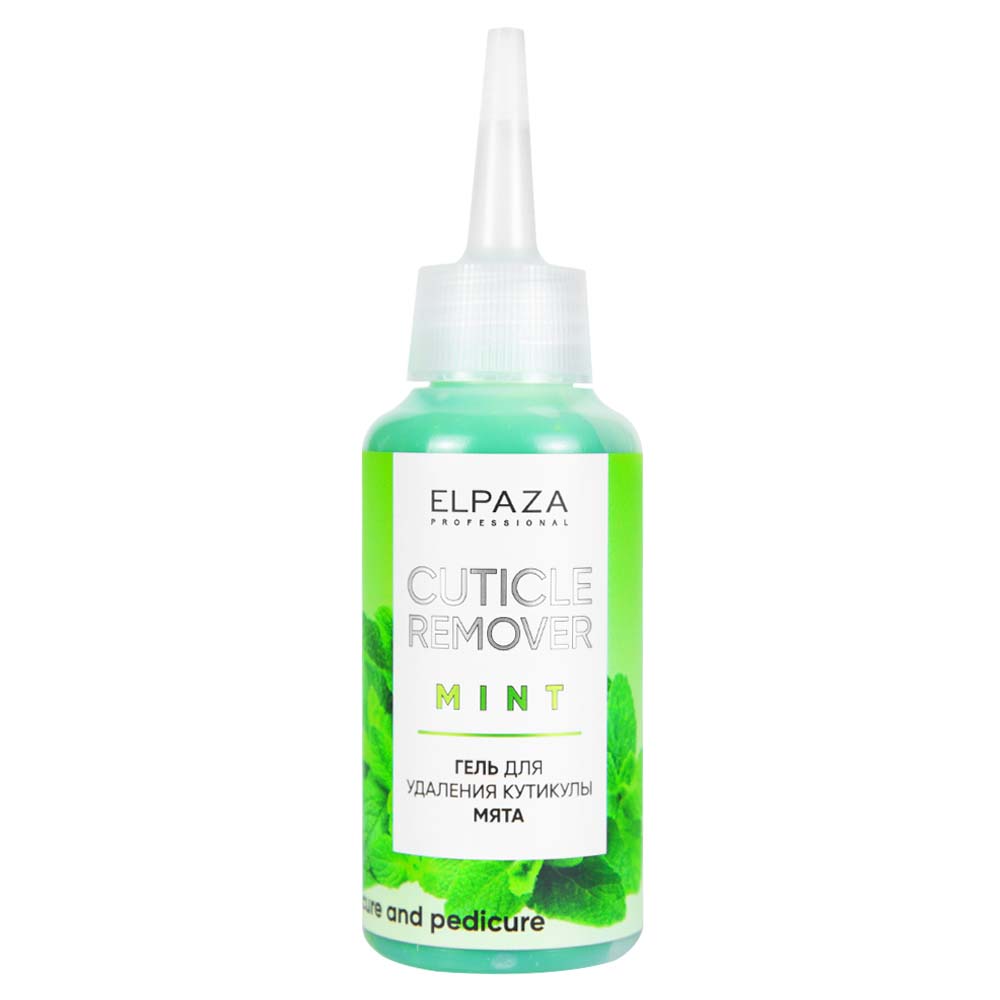
- Permanent nail deformity
- Spread of infection to deeper tissues (e.g., tendon sheaths, bones)
- Systemic infection in rare cases
How quickly can paronychia progress to a more serious infection? While most cases of paronychia remain localized, the infection can spread rapidly in some individuals, particularly those with compromised immune systems. If you notice signs of worsening infection or systemic symptoms, seek medical care promptly to prevent potential complications.
Special Considerations for Chronic Paronychia
Chronic paronychia requires a different management approach compared to acute cases. It often involves addressing underlying factors that contribute to persistent inflammation and infection. Key aspects of chronic paronychia management include:
- Identifying and addressing occupational or environmental exposures
- Managing underlying medical conditions (e.g., diabetes, immunosuppression)
- Long-term use of topical corticosteroids or immunomodulators
- Behavioral modifications to reduce nail trauma
- Regular follow-up with a healthcare provider
Why is chronic paronychia more challenging to treat than acute cases? Chronic paronychia often involves a complex interplay of factors, including persistent irritation, mixed bacterial and fungal infections, and nail changes that create a cycle of inflammation. Breaking this cycle requires a multifaceted approach and patience, as improvement may take weeks to months.
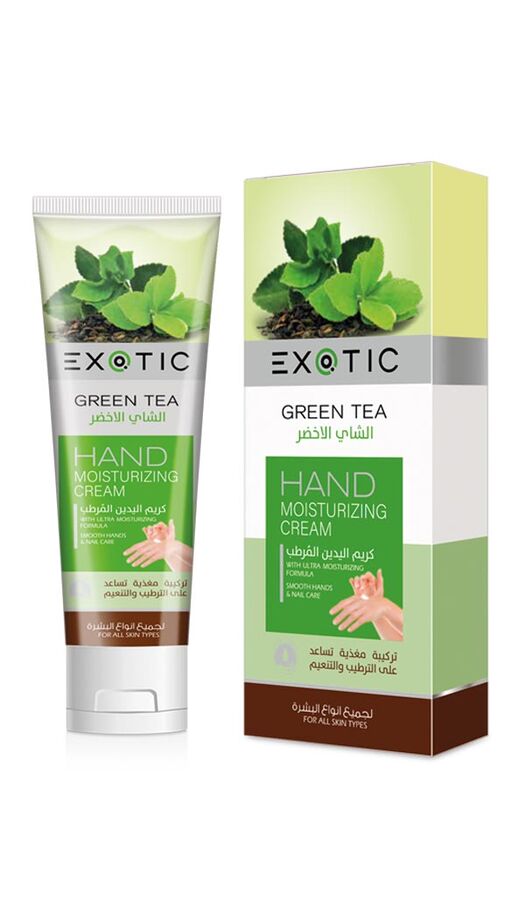
Emerging Treatments and Research in Paronychia Management
As our understanding of paronychia evolves, new treatment approaches are being explored:
- Photodynamic therapy for resistant fungal infections
- Novel topical formulations with enhanced penetration
- Combination therapies targeting both bacterial and fungal components
- Probiotics for prevention and treatment of recurrent infections
What role might probiotics play in paronychia management? While research is still in early stages, some studies suggest that certain probiotic strains may help prevent recurrent skin infections by modulating the skin’s microbiome and enhancing local immune responses. This approach could potentially offer a new avenue for preventing and managing paronychia, particularly in individuals prone to recurrent infections.
Understanding the nuances of paronychia – from its causes and symptoms to effective treatment and prevention strategies – empowers individuals to maintain healthy nails and surrounding tissues. By recognizing early signs of infection and taking prompt action, most cases of paronychia can be effectively managed, preventing complications and ensuring optimal nail health. Remember, persistent or severe symptoms should always be evaluated by a healthcare professional to ensure appropriate treatment and prevent potential complications.
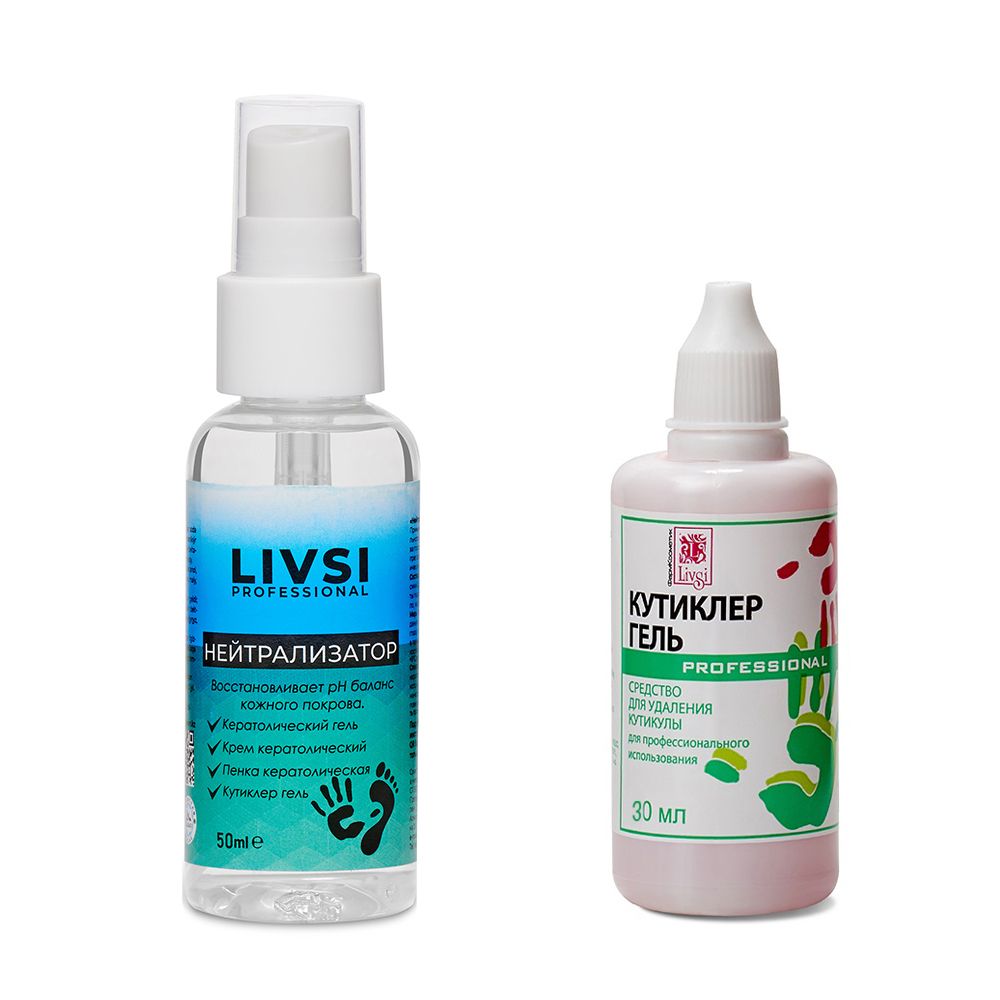
How to drain a finger paronychia
Improve your in-clinic patient care with this article on draining a finger paronychia, a common finger infection.
Siamak Moayedi, MD
3m read
Editors:Shelley Jacobs, PhD
Peer reviewers:Franz Wiesbauer, MD MPH Internist
Last update19th Nov 2020
What is a finger paronychia?
A paronychia is an infection of the nail root of the fingers or toes. It’s a very common infection and is caused by the introduction of bacteria under the cuticle. This is often from people chewing or ripping a hangnail with their teeth, and is also seen in barbers.
In a wound culture, Staphylococcus is the most common bacteria. But, you can have any kind of bacteria (such as anaerobes) from the mouth.
Physical signs of a finger paronychia
Patients usually seek help after a few days of increasing swelling and pain at the base of a nail. The area is sensitive and pressure from the building pus is painful.
If the infection continues, it can extend to the pulp of the finger and cause a felon, or deep tissue abscess. This requires aggressive procedures and can even lead to loss of function or amputation.
Figure 1. Physical signs of a finger paronychia include swelling at the base of the nail, sensitivity to touch, pain, and pressure from pus build-up. A deep tissue abscess, or felon, can develop if the infection continues.
How do you treat paronychia?
If the infection is caught early when the nail base is a little swollen and red, you can prescribe frequent warm soaks (at least once every two hours), and a short course of antibiotics (e.g., cephalexin). An established infection and pus collection require incision and drainage.
Figure 2. Early paronychia infections can be treated with frequent warm soaks and antibiotics. Established infections require incision and drainage.
Become a great clinician with our video courses and workshops
Start learning for free
The tools you need to drain a finger paronychia
The first step when performing the incision and drainage technique is to collect the necessary medication and tools:
- Sterilizing solution
- Ice water
- #11 scalpel
Figure 3. Tools for a finger paronychia include sterilizing solution, ice water, and #11 scalpel.
Tools for a finger paronychia include sterilizing solution, ice water, and #11 scalpel.
How to drain a finger paronychia
This step-by-step procedure ensures a safe, clean, and (relatively) painless abscess drainage:
- Place the patient’s finger in a cup of ice water until they can’t stand it anymore to numb the finger. This method is fast, painless, and softens the cuticle. Alternatively, you can perform a digital nerve block.
- When the finger is numb, clean the cuticle with the sterilizing solution.
- Stab under the skin parallel to the nail, using your #11 blade.
- You will immediately see pus come out.
Figure 4. Procedure for draining a finger paronychia. 1) Numb the finger with ice water or a digital nerve block. 2) Clean the cuticle with sterilizing solution. 3) Stab under the skin parallel to the nail with the #11 blade. 4) Pus will escape from the incision.
Post-procedure care for a finger paronychia
Have your patient soak their finger in warm water every two hours for the next two days. Antibiotics are not needed for minor cases of paronychia, but use your judgment depending on the patient’s risk factors.
Antibiotics are not needed for minor cases of paronychia, but use your judgment depending on the patient’s risk factors.
Figure 5. After draining a finger paronychia, instruct your patient to soak their finger in warm water every two hours for the next two days.
Excellent job! You’re well on your way to mastering the treatment of a finger paronychia.
That’s it for now. If you want to improve your understanding of key concepts in medicine, and improve your clinical skills, make sure to register for a free trial account, which will give you access to free videos and downloads. We’ll help you make the right decisions for yourself and your patients.
recommended reading
About the author
Siamak Moayedi, MD
Associate Professor and Director of Medical Student Education, University of Maryland and Course Director, Essential and Critical Procedures, Emergency Medicine.
Author Profile
Become an expert
Emergency Procedures Masterclass (Part 1)
Emergency medicine and critical care
By Siamak Moayedi, MD
Emergency Procedures Masterclass (Part 2)
Emergency medicine and critical care
By Siamak Moayedi, MD
Highly commended by the British Medical Association
Awarded in the “digital” category of the BMA Book Awards – London 2017
See all courses
Next article
How to identify priapism
Improve your clinical diagnostic skills with this Clinical Guide article on recognizing and diagnosing ischemic priapism.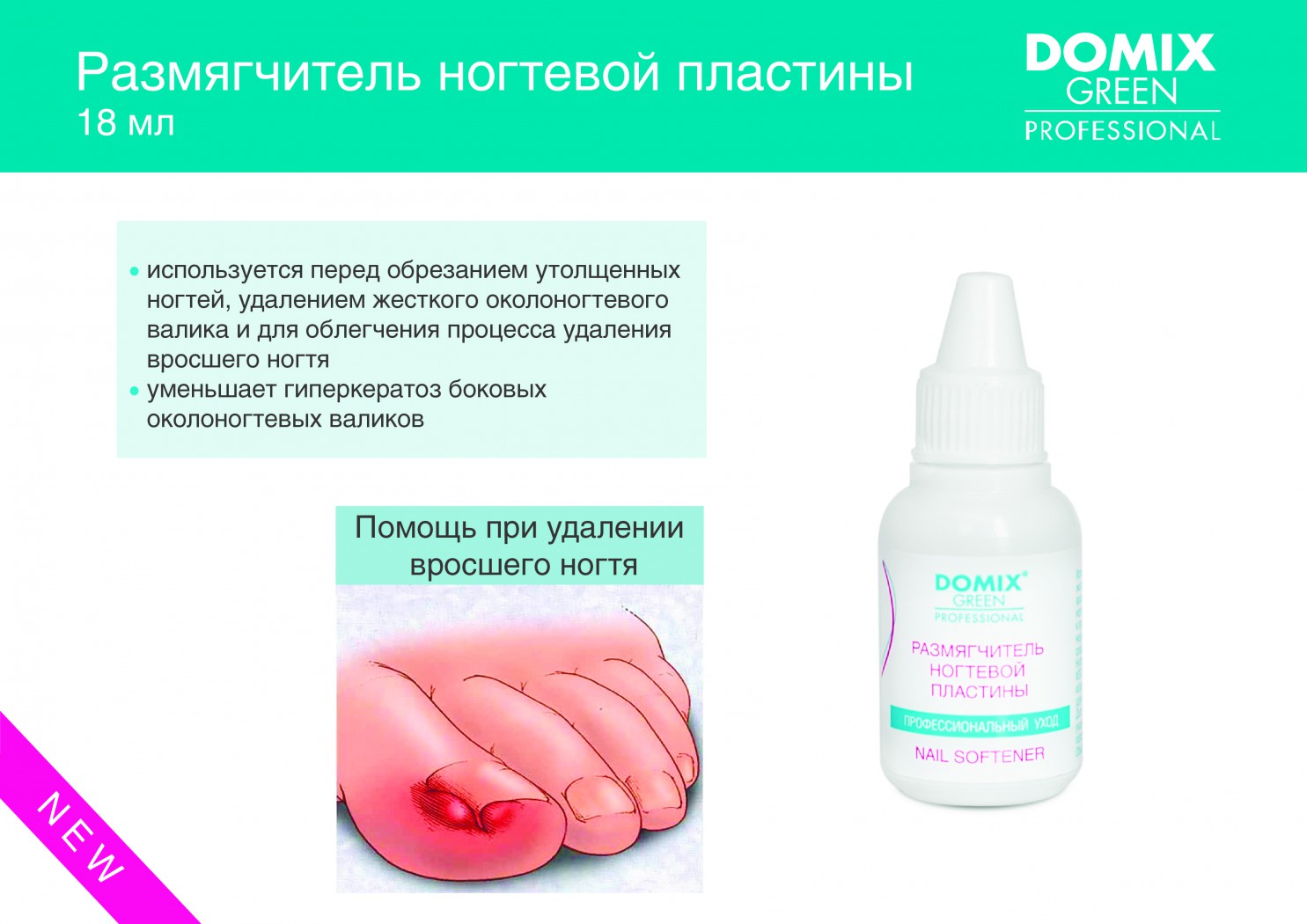
By Siamak Moayedi, MD • Last update 19th Nov 2020 • 3m read
Green Toenail Discoloration | AAFP
THOMAS QUATTLEBAUM, MD, AND CHARLES SONIDO, DO, University of Hawaii Family Medicine, Aiea, Hawaii
Am Fam Physician. 2021;104(6):645-646
Author disclosure: No relevant financial affiliations.
A 37-year-old woman with a history of hypertension presented with green discoloration of her right first toenail (Figure 1). She noticed the color change two days earlier when an artificial nail fell off. She had nail polish and artificial nails on all of her toenails. She had no toe pain, trauma to the area, or associated rash, swelling, or drainage. She was not a runner.
She had no toe pain, trauma to the area, or associated rash, swelling, or drainage. She was not a runner.
Question
Based on the patient’s history and physical examination findings, which one of the following is the most likely diagnosis?
A. Acral-lentiginous melanoma.
B. Melanonychia striata.
C. Onychomycosis.
D. Pseudomonas infection.
E. Subungual hematoma.
Discussion
The answer is D: Pseudomonas infection, or green nail syndrome. A cutaneous Pseudomonas aeruginosa infection results in blue-green biofilm on the surface of the nail. Predisposing factors for green nail syndrome include chronic paronychia, onycholysis, and onychomycosis. These disorders can alter the nail plate, exposing the nail bed to pathogens such as Pseudomonas or Candida.
Occupational history is important because green nail syndrome is common in homemakers, barbers, nail salon technicians, dishwashers, janitors, bakers, and medical personnel because of water or chemical exposure. 1 The use of artificial nails and nail polishes may increase the risk of infection, but there is little evidence to confirm this.
1 The use of artificial nails and nail polishes may increase the risk of infection, but there is little evidence to confirm this.
Diagnosis of green nail syndrome is based on clinical findings. Additional studies are typically unnecessary. However, if other conditions are suspected, nail culture or biopsy may be indicated. Treatment varies depending on the severity and duration of the condition. The risk of systemic Pseudomonas infection is low in people who are not immunocompromised.2
Treatment consists of trimming the nails, keeping nails dry, and avoiding trauma to the area. Home treatments such as vinegar (acetic acid) soaks or diluted chlorine bleach solutions are often tried by the patient before presentation for medical care, but the effectiveness of these remedies has not been reported.1 Topical antibiotics such as fluoroquinolones or aminoglycosides can be applied to the nail bed. Occasionally, the nail may need to be removed if conservative treatment fails.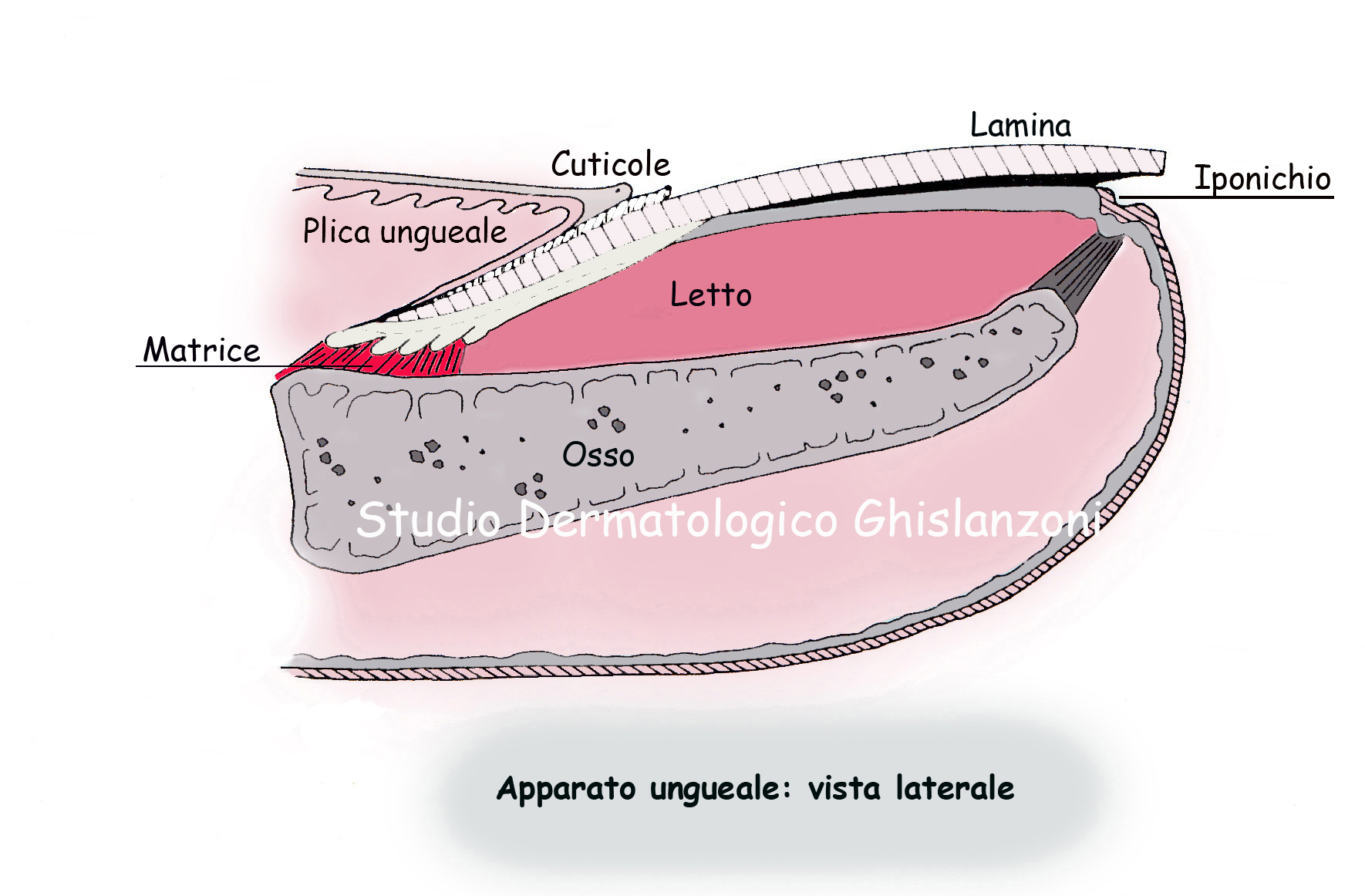 Oral antibiotics can be used for more severe infections. For this patient, two drops of topical ciprofloxacin were applied twice per day. The green nail discoloration improved after four weeks of topical antibiotics.
Oral antibiotics can be used for more severe infections. For this patient, two drops of topical ciprofloxacin were applied twice per day. The green nail discoloration improved after four weeks of topical antibiotics.
Melanonychia striata present as horizontal or longitudinal pigmented bands of the nail, sometimes involving the entire nail plate.3 The causes of melanonychia are extensive, and most are benign. Longitudinal nail bands must be differentiated from subungual or acral-lentiginous melanoma, which can present with a dark pigmented patch or longitudinal band subungually or periungually, with or without nail dystrophy. Melanoma may have darker discolorations, and a green color is less common. Suspicion for melanoma of the nail requires urgent dermatology referral.4
Onychomycosis is an infection of the nail caused by dermatophytes, yeast, or nondermatophyte molds. The nail is thickened and dystrophic. Nail plate destruction can occur if untreated.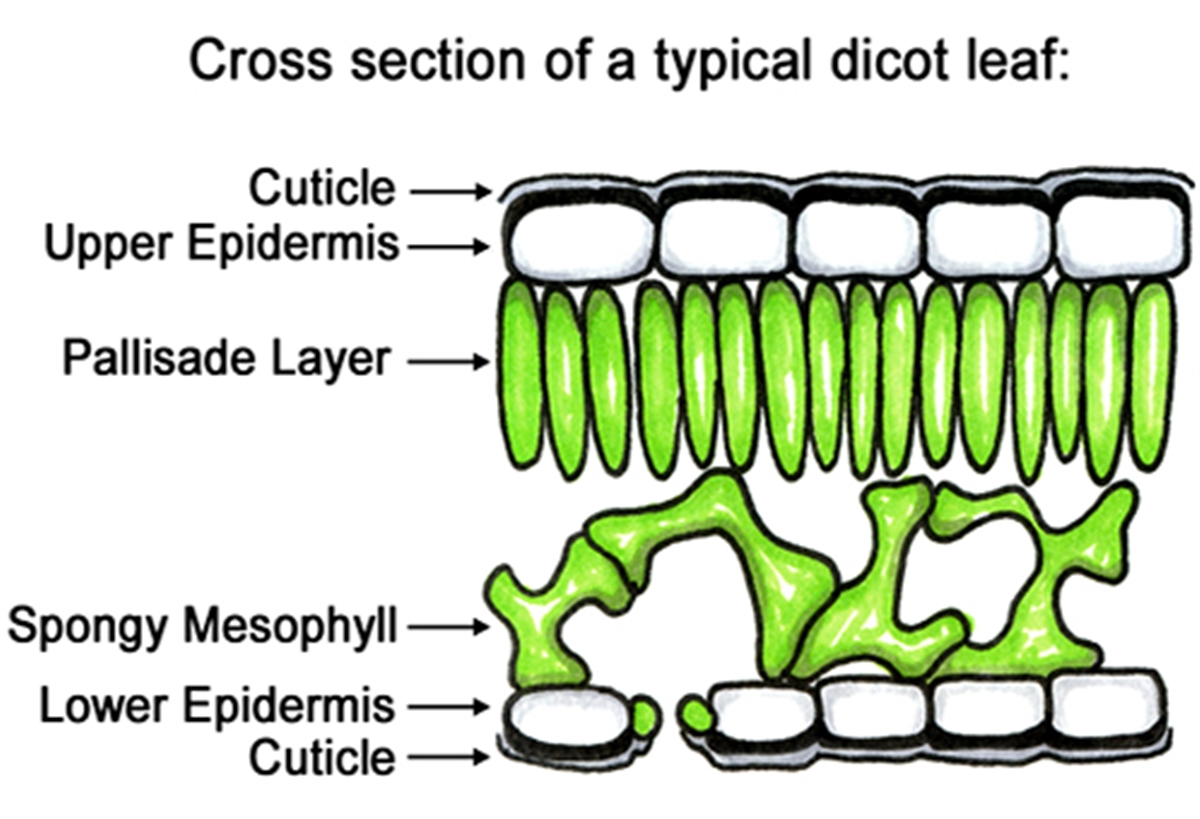 5 Although topical treatment is available, it is minimally effective, and oral antifungal treatment is usually needed for resolution.
5 Although topical treatment is available, it is minimally effective, and oral antifungal treatment is usually needed for resolution.
Subungual hematoma is caused by bleeding in the underlying vascular nail bed due to trauma. This is common in the toenails of distance runners and is therefore also referred to as runner’s nails. Treatment is generally supportive, although evacuation or nail removal may be required for symptom relief.
| Condition | Characteristics |
|---|---|
| Acral-lentiginous melanoma | Rare melanoma presentation; dark pigmented patch or longitudinal band subungually or periungually, with or without nail dystrophy |
| Melanonychia striata | Horizontal or longitudinal pigmented bands, sometimes involving the entire nail plate; must be differentiated from melanoma |
| Onychomycosis | Infection of the nail caused by dermatophytes, yeast, or nondermatophyte molds; nail is thickened and dystrophic; nail plate destruction can occur if untreated |
| Pseudomonas infection (green nail syndrome) | Cutaneous Pseudomonas aeruginosa infection resulting in green biofilm on the surface of the nail; exposure to wet conditions and possibly the use of nail products increase the risk of infection |
| Subungual hematoma | Collection of blood under the nail due to trauma; common in the toenails of distance runners |
Already a member/subscriber?
Log In
Subscribe
From
$145
Immediate, unlimited access to all AFP content
More than 130 CME credits/year
AAFP app access
Print delivery available
Subscribe
Issue Access
$59. 95
95
Immediate, unlimited access to this issue’s content
CME credits
AAFP app access
Print delivery available
Purchase Access:
Learn More
The editors of AFP welcome submissions for Photo Quiz. Guidelines for preparing and submitting a Photo Quiz manuscript can be found in the Authors’ Guide at https://www.aafp.org/afp/photoquizinfo. To be considered for publication, submissions must meet these guidelines. Email submissions to [email protected].
This series is coordinated by John E. Delzell Jr., MD, MSPH, associate medical editor.
A collection of Photo Quiz published in AFP is available at https://www.aafp.org/afp/photoquiz.
9 easy home care tips
Contents
- 1 9 home cuticle care tips from the expert
- 1.1 Don’t cut your cuticles
- 1.2 Use cuticle cuticle products
9 0005 1.3 Cuticle care: rule number two
- 1.4 Regular removal of dead cells on the cuticle
- 1.5 The importance of protecting the cuticle
- 1.6 Do not wipe the cuticle immediately after washing your hands
- 1.7 Healthy cuticles: proper nutrition
- 1.8 How to take care of your cuticles: 9 simple home care tips
- 1.8.1 Don’t overuse nail polish
- 1.9 Moisturize your cuticles: how to keep your nails healthy
- 1.10 Related videos: 9 0008
Learn 9 simple and effective rules for home nail cuticle care. Follow them to keep the skin around your nails healthy and looking gorgeous for a long time!
Healthy cuticles are a key element in the health and beauty of nails, so their care should not be neglected.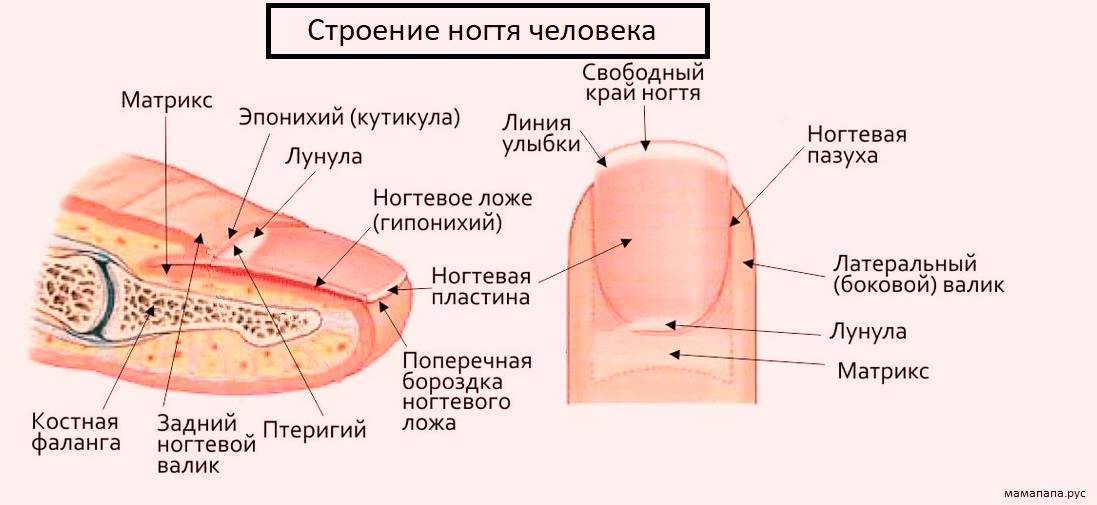 Despite the fact that many fashion trends suggest a small size of the cuticle, this small area plays an important role in protecting the nail plate from infection and moisturizing the skin.
Despite the fact that many fashion trends suggest a small size of the cuticle, this small area plays an important role in protecting the nail plate from infection and moisturizing the skin.
A few simple home care tips can help keep your cuticles in good shape, keeping your nails healthy and preventing disease. The cuticle must be carefully and carefully handled using special tools and products in order to maintain its health. By following these guidelines, you can keep your nails in excellent condition throughout your life.
In this article, we have compiled 9 simple rules for home cuticle care. They will help keep your cuticles healthy and tidy, and protect your nails from various problems.
Don’t cut your cuticles
Many people think cutting your cuticles is an important step in nail care. However, this process is not only painful, but also unnecessary. In addition, if you do not use a sterilized manicure tool, an infection can occur.
If you still want to remove excess cuticles, use special cuticle pushers. Do not forget to make sure that the instrument is sterile and carry out the nail treatment procedure before use.
Do not forget to make sure that the instrument is sterile and carry out the nail treatment procedure before use.
- Do not tear cuticles with your hands.
- Do not cut cuticles with scissors or nippers.
- Use a cuticle pusher.
- Make sure the manicure instrument is sterile before use.
Use special cuticle products
The cuticle is a delicate skin that protects nails from disease and infection. For her care, you need to use special tools that will help maintain the health and beauty of nails.
There are many products for cuticles: creams, oils, gels and special tools. Each of them has its own characteristics and purpose. For example, creams and oils nourish and moisturize the cuticle, making it soft and smooth. And gels protect against damage and disease.
When choosing a cuticle product, don’t skimp on quality. It is better to choose a proven brand and study the composition of the product. Be aware that some ingredients may cause allergic reactions.
Remember that the cuticle is not just an element of the nail, but an important part of the health and beauty of the hands. Use only high-quality products and do not forget about proper cuticle care.
Cuticle care: rule number two
Cuticles need to be massaged regularly to keep them from looking dry and rough.
How to do it? First, start by rubbing the cuticles with a cotton swab previously moistened with warm water. This will help soften it, and give flexibility. Then apply your favorite hand cream and start massaging your cuticles with gentle circular motions. This will not only improve the appearance of the cuticles, but also strengthen their structure, help prevent their exfoliation and the appearance of burrs.
But remember that the cuticle massage should not be carried out too intensively so as not to injure it. Massage no more than once a week.
If you forgot about cuticle massage, remember: this is one of the easiest and most affordable nail care methods.
Regular cuticle removal
A healthy cuticle should be soft and flexible, but needs to be maintained regularly to avoid unwanted problems. One of the important steps in caring for the cuticle is the removal of dead skin cells.
To remove dead cells, use special tools such as cuticle scissors or cuticle sticks. Be careful not to remove too much cuticle to avoid infection or damage.
Regular removal of dead cells on the cuticle will help keep it healthy and smooth, avoiding unwanted problems. Don’t forget that the cuticle plays an important role in protecting your nail, so don’t overdo the cuticle removal procedure.
Importance of cuticle protection
The cuticle is the protective layer over the nail plate and plays an important role in retaining moisture in the nail skin, which contributes to healthy and beautiful looking nails. However, the cuticle can also become a source of problems if left unprotected.
Improper handling of cuticles can lead to cuticle loss and irritation of the nail skin, which opens the way to various nail diseases such as fungus or skin inflammation. Therefore, cuticle protection should be an important element of home nail care.
Therefore, cuticle protection should be an important element of home nail care.
To protect your cuticles, use special cuticle care products that moisturize and protect the skin around your nails. In addition, you should avoid using hard tools and prefer soft tweezers and a hex file to tame the cuticle. Last but not least, you need to follow a diet and consume enough vitamins and minerals for healthy nails and skin.
- Use special cuticle care products.
- Avoid using hard tools.
- Get enough vitamins and minerals.
Do not wipe the cuticle immediately after washing your hands
The cuticle is a thin layer of skin around the nail that protects it from various infections and bacteria. After washing your hands, you notice that moisture has formed on the skin, so the first thing you want to do is dry your hands with a dry towel.
Do not forget that taking care of the cuticle is not only a beautiful appearance of nails, but also an important prevention of possible infections and other problems on the skin around it.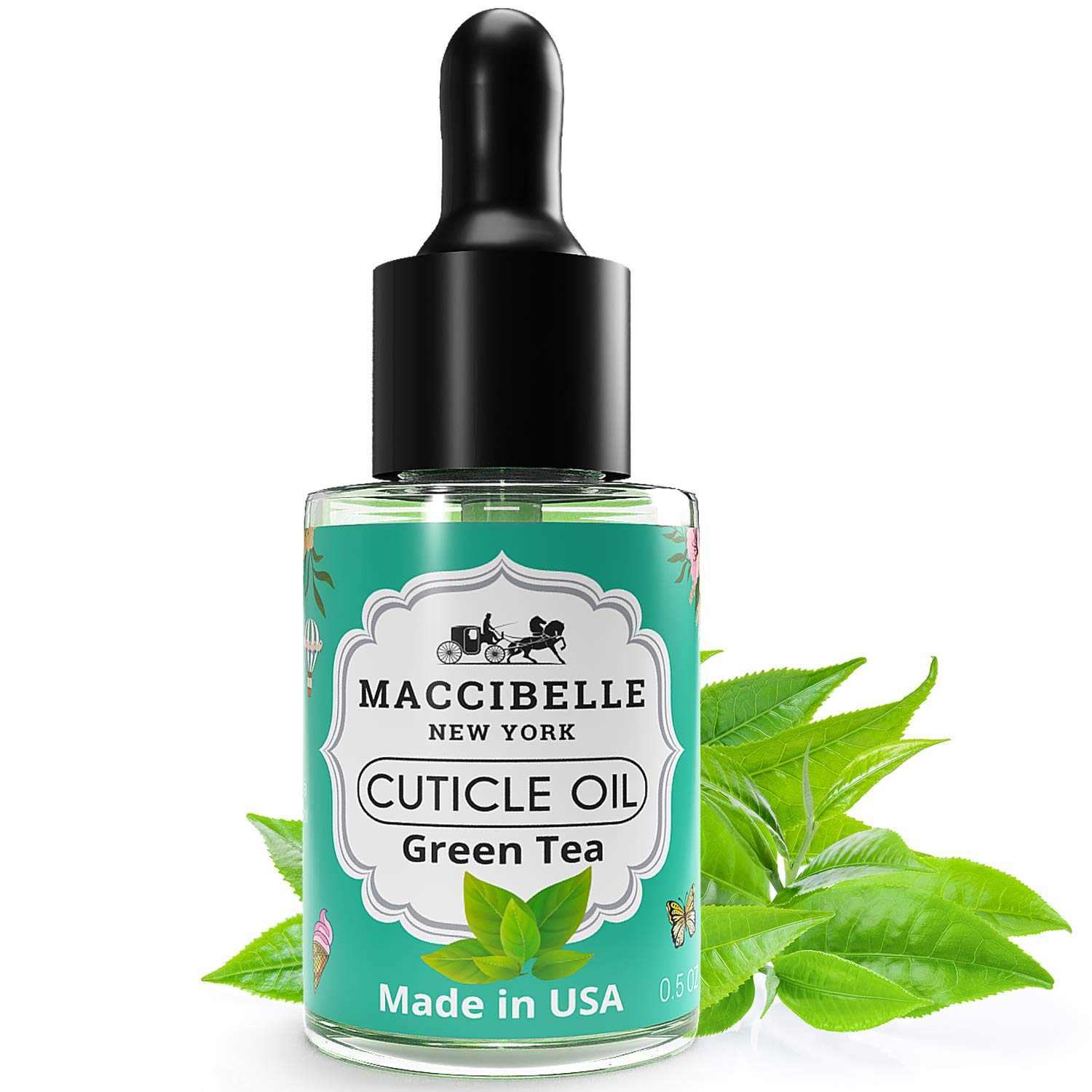 Proper cuticle care at home is one of the most affordable and easiest ways to keep your skin healthy and well-groomed.
Proper cuticle care at home is one of the most affordable and easiest ways to keep your skin healthy and well-groomed.
Healthy Cuticles: Proper Nutrition
Don’t forget that nutrition is the foundation of healthy cuticles. A rich and varied diet helps to restore cells and strengthen the nail plate. Vegetables, fruits, cereals, meats, fish, nuts, and seeds are just some of the foods you need to eat regularly to keep your nails healthy.
Cutting out sugar and fatty foods is the first step towards healthy nails. If you want your cuticles to look well-groomed and beautiful, avoid fast snacks and fried foods. Invest your money and time in a healthy diet – and you will see results not only on the cuticle, but also on the skin as a whole.
- Water is the key to healthy cuticles
This point should not be forgotten – because water is an extremely important element necessary for the health of the nail plate. Regular use of water allows not only to strengthen the cuticle, but also to maintain the flexibility and strength of the nail bed. In addition, pure water helps fight bacteria and infections, which is an important aspect for the health of not only nails, but the whole body.
In addition, pure water helps fight bacteria and infections, which is an important aspect for the health of not only nails, but the whole body.
| Foods good for cuticles: | Foods not recommended for healthy cuticles: |
|
|
How to take care of cuticles: 9 simple home care rules
Don’t overuse nail polish
Cuticles need regular care to keep nails looking beautiful and well cared for. However, excessive use of nail polish can damage the cuticles, which can lead to dehydration and various problems.
However, excessive use of nail polish can damage the cuticles, which can lead to dehydration and various problems.
Excessive use of nail polish can cause cuticle discoloration, separation and loss of functionality. The cuticle acts as an important barrier for nails, so dehydration can negatively affect nail health.
If you still want to use nail polish, then you should choose quality products and use them with the utmost care. Never use cuticle polish, use nail polish brushes, and be sure to let your cuticles rest after each manicure.
Moisturizing cuticles: how to keep your nails healthy
The cuticle is the protection of the nail bed, but insufficient moisture can lead to dryness and agnails. Regular hydration of the cuticle is a necessary condition for maintaining its health.
To moisturize the cuticle, you can use special creams, oils or balms that are applied to the bottom of the nail and rubbed gently into the skin. It is advisable to do this before going to bed so that the product has time to be absorbed into the cuticle.
- It is important to remember that the cuticle is necessary to protect the nails and should not be cut too far.
- If the cuticle overlaps the nail plate too much, it can be pushed back with a cuticle stick.
Don’t forget that regular cuticle moisture helps keep nails healthy, prevents them from breaking and protects against various infections.
Related videos:
Cuticle remover – a way to do a manicure at home
- 1 Cuticle Control Checklist
- 2 Things to consider when choosing this product
- 3 How to use the product correctly
- 4 Tips for safe use
A neat and beautiful manicure is simply impossible to achieve without cuticle removal. Of course, you can make an appointment at the nail salon and, with the help of the golden hands of a specialist, remove cuticles in just a few minutes.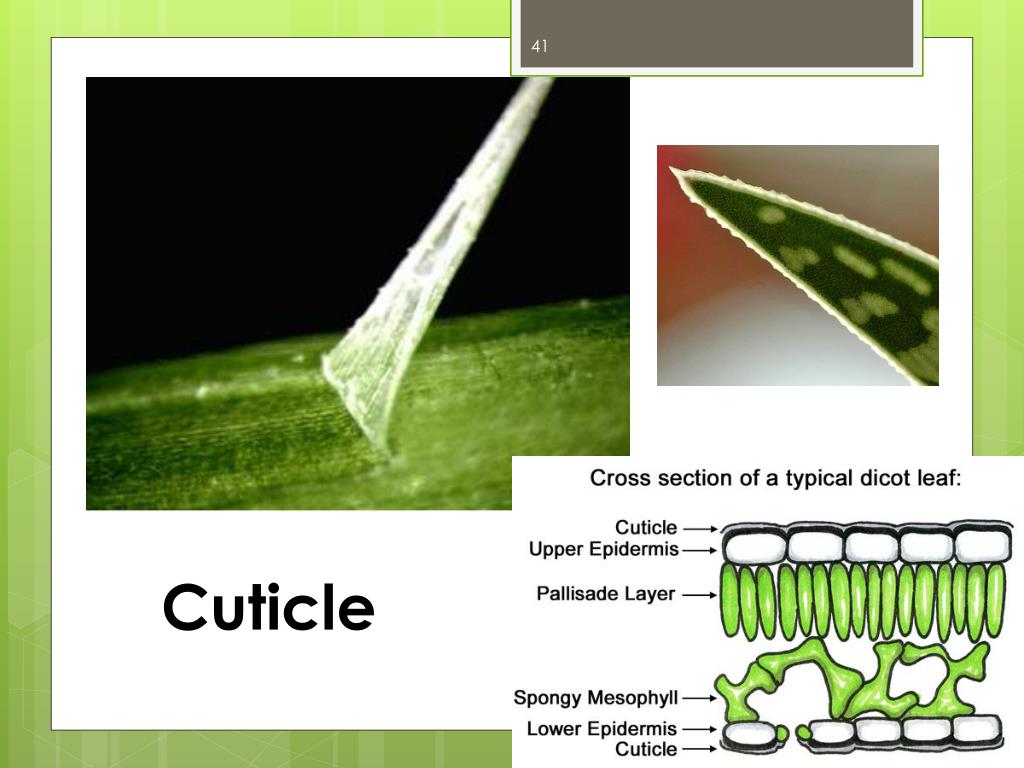 But you can use a special cuticle remover at home and save, thus, not only precious time, but also personal savings. Only thanks to this unique cosmetic nail product, you can make a neat European manicure in record time and create a real professional design on your nails. In addition, this tool completely eliminates the possibility of infection, and during processing does not cause discomfort.
But you can use a special cuticle remover at home and save, thus, not only precious time, but also personal savings. Only thanks to this unique cosmetic nail product, you can make a neat European manicure in record time and create a real professional design on your nails. In addition, this tool completely eliminates the possibility of infection, and during processing does not cause discomfort.
List of products for the fight against cuticles
Today, the nail product market offers a wide range of products to gently remove cuticles. And in addition to traditional ointments and special creams, you can buy gels, enamels, special oils and easy-to-use pencils. Namely:
- Instant Cuticle Remover from the manufacturer Sally Hansen’s is considered one of the most popular products in this direction, which can be easily used both at home and in the salon. However, when using this tool, you need to remember that Instant Cuticle Remover consists of concentrated potassium hydroxide, and this, in turn, indicates its high efficiency, which can cause irritation or damage to the nail during the procedure.
 That is why before use, you need to carefully read the instructions and apply the Instant Cuticle Remover gel for only 15 seconds.
That is why before use, you need to carefully read the instructions and apply the Instant Cuticle Remover gel for only 15 seconds.
It should be noted that absolutely any product in this category contains not only special softening ingredients, but also unique moisturizing and soothing ingredients. And also there are substances that slow down the growth of the cuticle.
- CND Cuticle Away Gel is another well-known nail tool that has a lot of positive qualities and only one drawback – it’s too high a price. Although the gel belongs to the universal category, it is ideal for sensitive and thin cuticles.
- Beauty Awards winner German brand Alessandro Cuticle is a professional tool that can easily remove cuticles in 30 seconds. As for the price, unlike the previous product, this tool is available for everyone who wants to experiment with professional nail materials.
- Victoria Shu gel containing almond oil can be purchased at a minimal price.
 Due to the dense consistency and practical brush, the product is very convenient to use. In addition, this product is offered to the consumer in a volume of 6 ml, which allows it to be used both on vacation and on business trips.
Due to the dense consistency and practical brush, the product is very convenient to use. In addition, this product is offered to the consumer in a volume of 6 ml, which allows it to be used both on vacation and on business trips. - Practical and easy to use, the Beauty Triumph pencil can not only remove cuticles, but can also soften the skin, and eventually make the cuticles generally invisible. In addition, the substances that make up this unusual remedy disinfect wounds and promote their healing.
- Inexpensive express tool from Eveline is a great way to get rid of cuticles for a long time. The cream contains healing avocado oil, a complex of vitamins and phytosterols, thanks to which dry and roughened periungual skin is softened and moisturized as much as possible within 30 seconds. This product is produced in the form of a liquid cream, which is very convenient to use on its own.
- Belweder is a fast-acting cuticle remover and is considered highly effective in the prevention of fungal diseases and infections of various types.
 In addition, Belweder improves the condition of brittle and exfoliating nails, eliminates the yellowness of the nail plate and corrects age-related deformation.
In addition, Belweder improves the condition of brittle and exfoliating nails, eliminates the yellowness of the nail plate and corrects age-related deformation.
When purchasing a preparation for unedged manicure, you should remember that it is not necessary to choose an expensive Premium class product, because even the most inexpensive remover can have good qualities and excellent results. That is why, before choosing a remedy, read reviews and recommendations about a particular drug.
- Severina is a gentle and at the same time effective product for an ugly manicure, for all skin types and even sensitive ones. The composition includes vitamins of group E, which acts as an anti-inflammatory and soothing agent. You need to use the drug once a week, treating the cuticles for 2-3 minutes.
- Quick-acting drug “Smart enamel” does not contain formaldehydes and toluene harmful to humans, and it contains blue algae extract, a complex of vitamins and microelements, henna and medicinal aloe juice.
 Thanks to this unique composition, the product is able to moisturize as much as possible and completely destroy rough skin at the molecular level.
Thanks to this unique composition, the product is able to moisturize as much as possible and completely destroy rough skin at the molecular level.
Things to consider when choosing this product
If you are just taking your first steps in nail design and do not know at all which products are better and more effective for removing cuticles. It is worth listening to the opinion of experts and taking into account some criteria when choosing. Namely:
- Price criterion. As a rule, most consumers pay the first attention to the price of the goods and indeed the more expensive the product, the more effective it is.
You should know that professional products not only remove cuticles, but can also soften the skin around the nail plate as much as possible, strengthening its surface. Whereas an amateur product, it can only remove cuticles.
- Volume. You should not buy a product in a large volume for the cuticle removal procedure at home, 6 or 12 ml is enough.
 But if you decide to do nail design professionally or purchase a product for a nail salon, it is best to buy a large bottle.
But if you decide to do nail design professionally or purchase a product for a nail salon, it is best to buy a large bottle. - Composition. Whichever product you choose, this product belongs to the category of aggressive chemicals. However, to mitigate the situation, it is worth paying attention to components such as green tea, aloe juice and almond oil when choosing. It is these natural ingredients that can neutralize the effects of harmful substances and help keep the skin around the nail plate soft and smooth.
It should be noted that a remover appeared on the nail cosmetics market, which contains only natural ingredients (vegetable and essential oils, vitamins and trace elements necessary for normal nail growth). And although such a product costs a lot of money, its natural properties are simply priceless for a beautiful manicure.
- Validity time. If, due to your busyness, you cannot devote a lot of time to a manicure, you must use only the tool that works after 10-15 seconds.
 And do not be lazy to read the instructions before the manicure procedure, because if you do not have enough cuticle oil on the nails, it may not work, and if you overdo it, it will ruin the nail plate.
And do not be lazy to read the instructions before the manicure procedure, because if you do not have enough cuticle oil on the nails, it may not work, and if you overdo it, it will ruin the nail plate.
How to use the product correctly
Do not think that only professionals can use cuticle products. On the contrary, due to the availability of this nail product and ease of use, it can be easily used at home. The main thing is to follow a certain sequence.
- The cuticle removal procedure must be started with a water treatment. That is, support your fingertips in a warm bath or take a bath completely. This aspect depends only on your personal preferences.
- After softening the cuticle, it must be gently pushed back with a special pusher or a regular orange stick.
Remember that cuticles need to be softened for safe and effective removal. Otherwise, it will be very difficult to gently push back the cuticle and easily damage it.
- Next, you need to apply your chosen cuticle remover, rubbing it with a nail file along the cuticle.
- If necessary, you can rub the product with a tissue or cotton pad.
- Then rinse off with warm water for a few minutes. However, it is worth noting that each nail – a product of this direction, has its own specific period of time. That is why before the procedure you need to carefully read the instructions.
- After rinsing off the product, dry your fingers thoroughly with a towel and apply a moisturizing nail cream or use a special oil and cuticle nourishing liquid.
By following this sequence, you can achieve an excellent result, clean the nail bed and increase the clarity of the contours of the nail plate. However, if you are unhappy with the result, you should repeat the procedure again. After all, it often happens that before applying the cuticle remover, it was difficult to soften them, or in a hurry you forgot to make a warm bath at home. In any case, you need to repeat the procedure, and owners of rough cuticles are advised to repeat these steps at least three times.
In any case, you need to repeat the procedure, and owners of rough cuticles are advised to repeat these steps at least three times.
Advice on safe use
- Before the procedure, it is imperative to wash your hands, not only before, but also after it. Only in this way will you minimize absolutely any risk of infection.
It must be remembered that in case of infection, a special antiseptic cream must be applied immediately. But if the cuticle area is very inflamed and painful, you should immediately consult a doctor. Especially if you are diabetic.
- Before you use a special liquid or cream at home that can quickly remove cuticles, you need to test them. To do this, you need to apply a small amount of the product to a sensitive area of \u200b\u200bthe skin, if there is no negative reaction, you can safely use it.
- Do not use cuticle remover on damaged skin. Since acute pain may appear when a chemical enters, the skin will turn red and inflamed, and the open wound will not heal for a long time.


 That is why before use, you need to carefully read the instructions and apply the Instant Cuticle Remover gel for only 15 seconds.
That is why before use, you need to carefully read the instructions and apply the Instant Cuticle Remover gel for only 15 seconds. Due to the dense consistency and practical brush, the product is very convenient to use. In addition, this product is offered to the consumer in a volume of 6 ml, which allows it to be used both on vacation and on business trips.
Due to the dense consistency and practical brush, the product is very convenient to use. In addition, this product is offered to the consumer in a volume of 6 ml, which allows it to be used both on vacation and on business trips.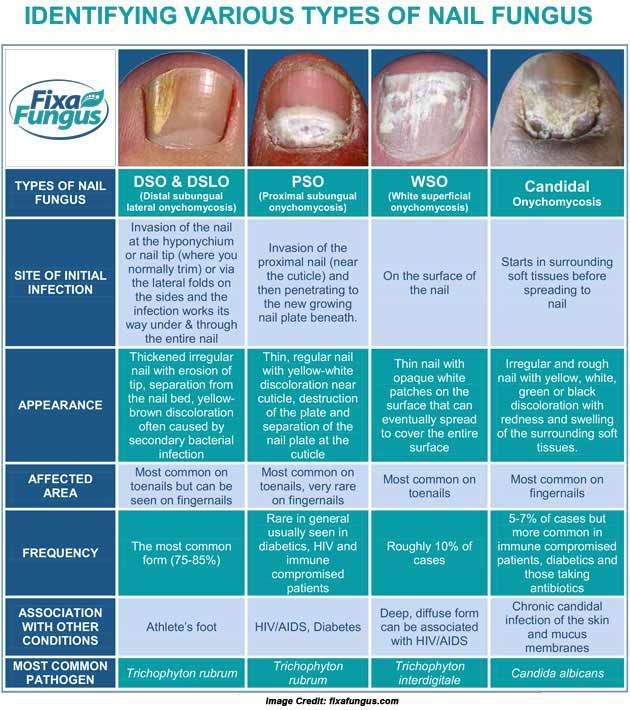 In addition, Belweder improves the condition of brittle and exfoliating nails, eliminates the yellowness of the nail plate and corrects age-related deformation.
In addition, Belweder improves the condition of brittle and exfoliating nails, eliminates the yellowness of the nail plate and corrects age-related deformation. Thanks to this unique composition, the product is able to moisturize as much as possible and completely destroy rough skin at the molecular level.
Thanks to this unique composition, the product is able to moisturize as much as possible and completely destroy rough skin at the molecular level. But if you decide to do nail design professionally or purchase a product for a nail salon, it is best to buy a large bottle.
But if you decide to do nail design professionally or purchase a product for a nail salon, it is best to buy a large bottle. And do not be lazy to read the instructions before the manicure procedure, because if you do not have enough cuticle oil on the nails, it may not work, and if you overdo it, it will ruin the nail plate.
And do not be lazy to read the instructions before the manicure procedure, because if you do not have enough cuticle oil on the nails, it may not work, and if you overdo it, it will ruin the nail plate.
